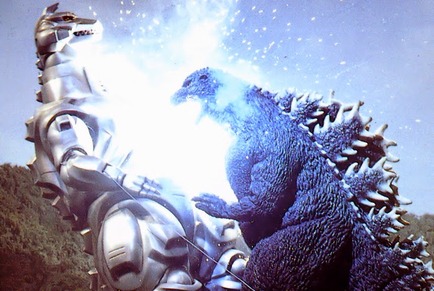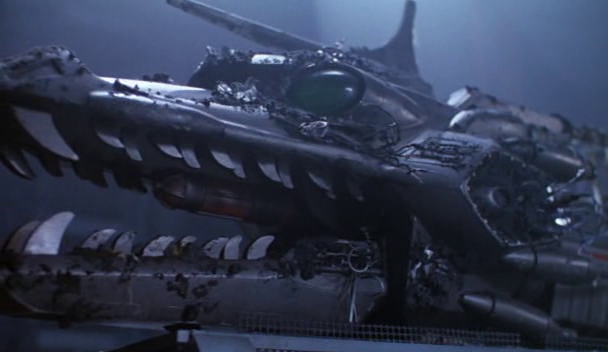- Home
- Features
- Movies/Media
- Collectibles
- Comics/Books
-
Databases
-
Figure Database
>
-
X-Plus Toho/Daiei/Other
>
- X-Plus 30 cm Godzilla/Toho Part One
- X-Plus 30 cm Godzilla/Toho Part Two
- X-Plus Large Monster Series Godzilla/Toho Part One
- X-Plus Large Monster Series Godzilla/Toho Part Two
- X-Plus Godzilla/Toho Pre-2007
- X-Plus Godzilla/Toho Gigantic Series
- X-Plus Daiei/Pacific Rim/Other
- X-Plus Daiei/Other Pre-2009
- X-Plus Toho/Daiei DefoReal/More Part One
- X-Plus Toho/Daiei DefoReal/More Part Two
- X-Plus Godzilla/Toho Other Figure Lines
- X-Plus Classic Creatures & More
- Star Ace/X-Plus Classic Creatures & More
-
X-Plus Ultraman
>
- X-Plus Ultraman Pre-2012 Part One
- X-Plus Ultraman Pre-2012 Part Two
- X-Plus Ultraman 2012 - 2013
- X-Plus Ultraman 2014 - 2015
- X-Plus Ultraman 2016 - 2017
- X-Plus Ultraman 2018 - 2019
- X-Plus Ultraman 2020 - 2021
- X-Plus Ultraman 2022 - 2023
- X-Plus Ultraman Gigantics/DefoReals
- X-Plus Ultraman RMC
- X-Plus Ultraman RMC Plus
- X-Plus Ultraman Other Figure Lines
- X-Plus Tokusatsu
- Bandai/Tamashii >
- Banpresto
- NECA >
- Medicom Toys >
- Kaiyodo/Revoltech
- Diamond Select Toys
- Funko/Jakks/Others
- Playmates Toys
- Art Spirits
- Mezco Toyz
-
X-Plus Toho/Daiei/Other
>
- Movie Database >
- Comic/Book Database >
-
Figure Database
>
- Marketplace
- Kaiju Addicts
|
Godzilla vs. Mechagodzilla II, released in Japan as Godzilla vs. Mechagodzilla (ゴジラvsメカゴジラ Gojira tai Mekagojira), is a 1993 Japanese science fiction kaiju film produced by Toho. Directed by Takao Okawara and featuring special effects by Koichi Kawakita, the film starred Masahiro Takashima, Ryoko Sano, and Megumi Odaka. Despite being produced and released in 1993, this twentieth film in the Godzilla series was marketed as the 40th anniversary Godzilla movie. The film featured the return of classic characters from the original series such as Rodan and Mechagodzilla, as well as introducing an infant Godzilla named BabyGodzilla. Although it shares a title with Godzilla vs. Mechagodzilla, the film is neither a remake nor a re-imagining of the earlier film. Despite its North American title, the film is not a sequel to the original Godzilla vs. Mechagodzilla, nor does it share any connections or similarities with the original. The film was released straight to pay-per-view satellite television in the United States in 1998 by Sony Pictures Television.  Plot In 1992, the United Nations establishes the United Nations Godzilla Countermeasures Center (UNGCC) to stop Godzilla. The remains of Mecha-King Ghidorah are salvaged from the ocean and used to create two anti-Godzilla machines. The first is a flying gunship called Garuda. The second and more powerful machine, modeled after Godzilla himself, is called Mechagodzilla. Two years later, on a mission to Adona Island in the Bering Sea, a Japanese team comes across what they assume is a large pteranodon egg. The egg gives off a strange telepathic signal that attracts Godzilla and Rodan, an adult pteranodon irradiated by the nuclear waste. Both monsters appear and fight for the egg. During their battle Godzilla critically wounds Rodan while the research team escapes with the egg. It's taken to a research center in Kyoto, where it imprints on a young female scientist. When a Baby Godzilla hatches from the egg, the research team concludes that the egg was left in the pteranodon nest with Rodan, just as European cuckoos leave their eggs in the nests of other birds. Godzilla appears in Japan, once again responding to the creature's psychic call. The JSDF mobilizes Mechagodzilla, which intercepts Godzilla as he is making his way to Kyoto. The two battle, with Mechagodzilla seeming to have the upper hand, until Godzilla disables Mechagodzilla with a pulse of energy. Godzilla continues searching for Baby, but the scientists, having discovered the telepathic link between the monsters, shield it from Godzilla. Frustrated, Godzilla destroys most of Kyoto before returning to the ocean.  Tests on the baby reveal that it has a second brain in his hips that controls the animal's movement. The UNGCC assumes that this also holds true for Godzilla and decide to use Baby to bait Godzilla into a fight with Mechagodzilla. The "G-Crusher" is installed in Mechagodzilla's wrists, allowing the robot to penetrate Godzilla's hide and paralyze the monster by destroying its second brain. The plan backfires, however, when Rodan, having survived his battle with Godzilla and further mutated by radiation, responds to Baby's call and intercepts the UNGCC transport. The UNGCC is forced to send Mechagodzilla and Garuda after Rodan instead and, in the ensuing battle, Rodan is mortally wounded. Godzilla shows up moments later and attacks Mechagodzilla. When the two appear to be evenly matched, Mechagodzilla combines with Garuda. The upgraded Mechagodzilla, called Super-Mechagodzilla, carries out the G-Crusher plan and succeeds in paralyzing Godzilla. Suddenly, the dying Rodan, once again revived by Baby's call, attempts to escape. Super-Mechagodzilla shoots him down and Rodan lands on top of Godzilla. Rodan's lifeforce regenerates Godzilla's second brain and supercharges him. Now more unstoppable than before, Godzilla attacks and destroys Super-Mechagodzilla with a high-powered red atomic ray. Godzilla finally locates Baby, who is at first afraid of the giant monster. Miki Saegusa, a young psychic woman with a link to Godzilla, telepathically communicates with Godzilla, convincing him to adopt Baby as his own. Baby then accepts Godzilla as his father, and Godzilla and Baby head out to the sea. Cast
Production In the original ending for the film, Godzilla destroys Garuda but is killed by Mechagodzilla. Garuda's nuclear reactor explodes and resurrects the King of the Monsters. In the final film, Rodan was given the almost-heroic task of bringing Godzilla back to life. Another ending was considered in which Godzilla's escaping life energy mutates Baby Godzilla into a new adult Godzilla. This scenario was slightly altered and reused in Godzilla vs. Destoroyah. Original Showa Godzilla director Ishirō Honda was reportedly asked to direct this film, but his death in early 1993 prevented this from happening.  English Version After the film was released in Japan, Toho commissioned a Hong Kong company to dub the film into English. In this international version of the movie, an English title card was superimposed over the Japanese title, as had been done with the previous 90s Godzilla films. In this dubbed version of the film, Rodan's name is changed to "Radon," as he is in Japan. Columbia TriStar Home Entertainment released Godzilla vs. Mechagodzilla II on home video on August 3, 1999. This was the first time the film had been officially released in the United States. TriStar used Toho's English dub but cut the end credits and created new titles and opening credits. An anamorphic widescreen transfer of this version was later released on DVD by TriStar in February 2005 with the option to listen to the original Japanese audio. Box Office The film sold approximately 3,800,000 tickets in Japan grossing roughly $18,000,000 (U.S).  Critical Reaction Monster Zero said that "some critical flaws exist" but felt overall that "of all the films of the [Heisei era], Godzilla vs MechaGodzilla II represents Toho's most technically and artistically successful effort," adding that "the action sequences in this film are impeccable... excitingly staged, logical, and quite dramatic." American Kaiju said the film "stumbles in the areas of both story and special effects" but concluded it to be "a good, solid entry in the Godzilla series," saying that "the battles between Godzilla and Mechagodilla entertain" and "Akira Ifukube's music score soars." Japan Hero said "the story was interesting," "the soundtrack is plain gorgeous," and "the costume designs are just as great," concluding: "While this is not my top favorite movie [of the Heisei series], it is definitely one of the best." Home Media Releases Columbia/Tristar Home Entertainment Released: February 8, 2005 Aspect Ratio: Widescreen (1.78:1) Anamorphic [NTSC] Sound: Japanese and English (Dolby Digital 2.0 surround) Subtitles: English (Dubtitles) Supplements: Trailers for Godzilla: Tokyo SOS, MirrorMask, Anacondas: The Hunt for the Blood Orchid, and Steamboy Case type: Keep Case Notes: The subtitles for the Japanese track are really "dubtitles" (the subtitles are actually the captions for the English track). The video transfer is simply a widescreen version of TriStar's print. This means the Toho logos and end credits have been cut and all the onscreen, optical text from Toho's international version has been removed or replaced by video-generated text. MPAA Rating: PG for sci-fi monster violence and some language Blu-Ray will be coming out May 6, 2014 as a double feature with Godzilla vs. SpaceGodzilla.
0 Comments
Leave a Reply. |
Release Dates
November 2023
|
|
© 2011-2024 Kaiju Battle. All Rights Reserved.
|
Visit Our Social Media Sites
|
Proudly powered by Weebly
|
- Home
- Features
- Movies/Media
- Collectibles
- Comics/Books
-
Databases
-
Figure Database
>
-
X-Plus Toho/Daiei/Other
>
- X-Plus 30 cm Godzilla/Toho Part One
- X-Plus 30 cm Godzilla/Toho Part Two
- X-Plus Large Monster Series Godzilla/Toho Part One
- X-Plus Large Monster Series Godzilla/Toho Part Two
- X-Plus Godzilla/Toho Pre-2007
- X-Plus Godzilla/Toho Gigantic Series
- X-Plus Daiei/Pacific Rim/Other
- X-Plus Daiei/Other Pre-2009
- X-Plus Toho/Daiei DefoReal/More Part One
- X-Plus Toho/Daiei DefoReal/More Part Two
- X-Plus Godzilla/Toho Other Figure Lines
- X-Plus Classic Creatures & More
- Star Ace/X-Plus Classic Creatures & More
-
X-Plus Ultraman
>
- X-Plus Ultraman Pre-2012 Part One
- X-Plus Ultraman Pre-2012 Part Two
- X-Plus Ultraman 2012 - 2013
- X-Plus Ultraman 2014 - 2015
- X-Plus Ultraman 2016 - 2017
- X-Plus Ultraman 2018 - 2019
- X-Plus Ultraman 2020 - 2021
- X-Plus Ultraman 2022 - 2023
- X-Plus Ultraman Gigantics/DefoReals
- X-Plus Ultraman RMC
- X-Plus Ultraman RMC Plus
- X-Plus Ultraman Other Figure Lines
- X-Plus Tokusatsu
- Bandai/Tamashii >
- Banpresto
- NECA >
- Medicom Toys >
- Kaiyodo/Revoltech
- Diamond Select Toys
- Funko/Jakks/Others
- Playmates Toys
- Art Spirits
- Mezco Toyz
-
X-Plus Toho/Daiei/Other
>
- Movie Database >
- Comic/Book Database >
-
Figure Database
>
- Marketplace
- Kaiju Addicts



 RSS Feed
RSS Feed